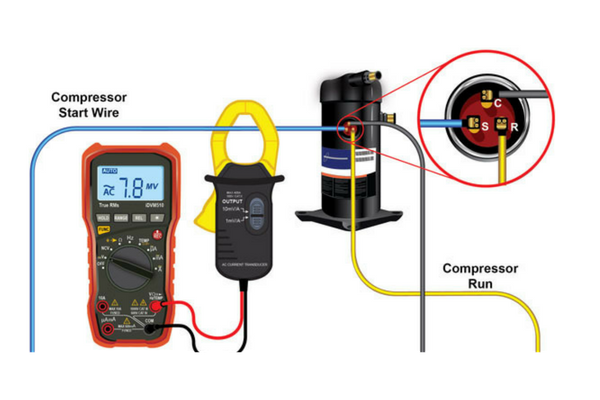Get Tech Tips
Subscribe to free tech tips.
Do You Replace the Contactor and Capacitor With a New Compressor

Replacing a compressor is expensive, time-consuming, and physically taxing. If we are replacing a compressor, I want us to be doggone sure we aren't going to be dealing with the same thing again, and this often includes a shiny new contactor and capacitor (on single-phase units).
We received a comment recently that called out the fact that we replaced a capacitor with a compressor even though it tested in range.
The commenter felt this was a slimy attempt to tack on more expense rather than a goodwill attempt to prevent future issues.
It is a fair question to ask: “What is appropriate to do when replacing a compressor?”
Why Replace the Capacitor?
For me, installing a new, properly sized capacitor with a new single-phase motor or compressor is always cheap insurance. When I do this, I always use higher quality, American-made capacitors to give the customer the best chance at going for quite some time before another issue. In our market, run capacitors are among the most common failures we see due to the long run times, high temperatures, and high voltage transient events like surges. We have much better luck with higher quality capacitors, so we use them as a standard operating procedure.
The same also goes for hard start kits; I will always remove any old aftermarket hard starts and go back with a factory start capacitor and potential relay where it is called for by the application. Whenever I say something like that, I get a lot of folks who love aftermarket hard starts who question it. My explanation is HERE.
If you are working on other motor types, such as self-contained refrigeration with a current relay, I would say the same. Go ahead and replace it rather than run the risk of another issue.
Why Replace the Contactor?
If a contactor is bright, shiny, and brand new, I'm probably not going to replace it. If it shows signs of wear, it is a good practice to replace it at the same time as the compressor, ESPECIALLY in three-phase units where single phasing can occur if one contact fails to connect.
This tip from Emerson also confirms this policy as advised.
Anything Else?
I recommend taking care of any contamination or burnout by using appropriate filter driers in both the liquid and suction lines and monitoring or replacing them, depending on the application and according to the recommendations by Emerson and Sporlan.
If the system contains an accumulator, it's advised to empty the old accumulator and measure the amount of oil it contains and its condition. It is often easier to replace the accumulator rather than reinstalling, especially if it has any signs of corrosion.
Take a close look at your pipework to make sure it is run properly without unnecessary oil traps. It should also have inverted traps at the coil wherever needed to prevent flooded starts and good suction line insulation.
We also suggest using a virgin charge, cleaning the system condenser, evaporator, and condensate system, and making sure the proper airflow is present. It is also a good idea to ensure that all manufacturer-recommended accessories are installed, especially if long lines are present. This could include things like a factory hard start, crankcase heater, pressure switches, or a liquid line solenoid.
Purge nitrogen, flow nitrogen while brazing, pull a proper vacuum, weigh in the charge, and check everything—including suction temperature at the compressor and compressor discharge temperature to make sure it isn't overheating.
All of this is in the service of the new compressor having a nice long life and the customer getting what they paid for, not as a way to drive up the invoice.
—Bryan











Comments
Your “commenter” is…..(struggling with maintaining postive vibes…)…. ill informed.
Of course you replace contactor, capacitor, start relay and anything else if you plan on remaining in business and standing behind the warranty of the replacement compressor
Your “commenter” is…..(struggling with maintaining postive vibes…)…. ill informed.
Of course you replace contactor, capacitor, start relay and anything else if you plan on remaining in business and standing behind the warranty of the replacement compressor
As a facility manager who has to submit at least three bids for projects, I cringe when I see bids that do not include these items.
As a facility manager who has to submit at least three bids for projects, I cringe when I see bids that do not include these items.
I want to also make every one aware that if you are changing a compressor under warranty the the most factories will also warranty all the components associated with the compressor. to include LL filter dryer, capacitors, start components, contactors, crank case heaters, some times acid away and suction dryers. Just check with the local tech support for the brand. If you were to ask the counter guys they may not know this information.
I want to also make every one aware that if you are changing a compressor under warranty the the most factories will also warranty all the components associated with the compressor. to include LL filter dryer, capacitors, start components, contactors, crank case heaters, some times acid away and suction dryers. Just check with the local tech support for the brand. If you were to ask the counter guys they may not know this information.
To leave a comment, you need to log in.
Log In